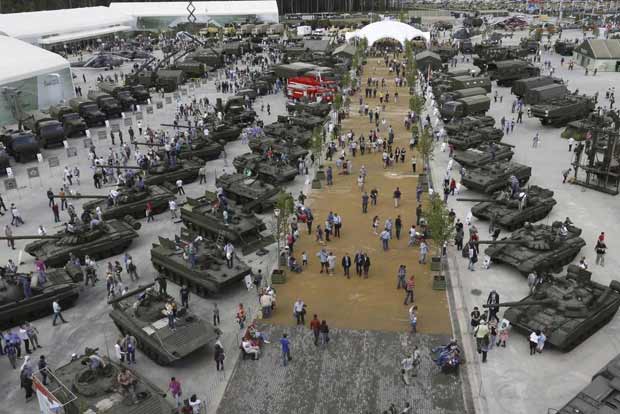International arms sales remained stable between 2016 and 2020 compared to the previous five years, according to a Sweden-based research institute.
Increased exports by the US, France and Germany were offset by declining Russian and Chinese exports.
Imports and exports remain close to their highest level since the end of the cold war, although this may change from the impact of the pandemic.
The biggest growth in arms imports was seen in the Middle East.
“It is too early to say whether the period of rapid growth in arms transfers of the past two decades is over,” said Pieter Wezeman, a senior researcher with the Stockholm International Peace Research Institute (Sipri) who collected the data.
“The economic impact of the Covid-19 pandemic could see some countries reassessing their arms imports in the coming years.
“However, at the same time, even at the height of the pandemic in 2020, several countries signed large contracts for major arms.”
The US remains the largest exporter, supplying arms to 96 states, and increasing its global share of arms exports to 37% during the five year period.
Almost half (47%) of US arms exports went to the Middle East, with Saudi Arabia alone accounting for 24% of total US arms exports.
France increased its exports of major arms by 44%, while Germany expanded its exports by 21%.
Israel and South Korea both significantly increased their exports, although both remain relatively small players in arms exports.
Arms imports surge in Middle East
The Middle East was the fastest growing market for arms, importing 25% more in 2016-20 compared to the previous five year period.
The biggest increases came from Saudi Arabia (61%), Egypt (136%) and Qatar (361%).
Asia and Oceania was the largest importing region for major arms, receiving 42% of global arms transfers.
India, Australia, China, South Korea and Pakistan were the biggest importers in the region.
Declining Russian and Chinese trade
Russia and China both saw their arms exports falling, although the two countries remained major suppliers to countries in sub-Saharan Africa.
Arms exports by Russia dropped by 22%, most of it attributable to a 53% drop in arms exports to India.
“Although Russia has recently signed new large arms deals with several states and its exports will probably gradually increase again in the coming years, it faces strong competition from the USA in most regions,” said Sipri researcher Alexandra Kuimova.
Exports by China, the world’s fifth largest arms exporter, fell 7.8%.
Pakistan, Bangladesh and Algeria were the largest recipients of Chinese arms.













![Hotstar Premium Cookies 2019 [*100% Working & Daily Updated*] Hotstar Premium Cookies 2019 [*100% Working & Daily Updated*]](https://tahav.com/wp-content/uploads/2019/11/Hotstar-Premium-Cookies-Free-100x70.jpg)



